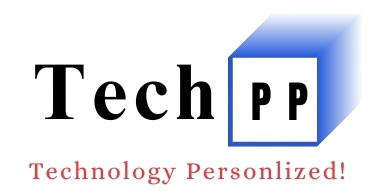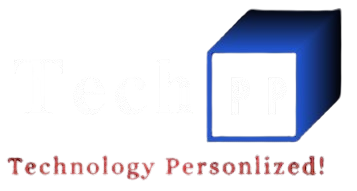The proliferation of AI tools has created an unexpected challenge for users. While choice typically benefits consumers, the explosion of specialized AI platforms has resulted in subscription fatigue, interface confusion, and workflow fragmentation. This paradox of choice has made AI aggregators not just useful but essential for effective AI utilization.
The Hidden Costs of AI Tool Sprawl
Organizations subscribing to multiple AI platforms face costs extending far beyond subscription fees. Each platform requires separate onboarding, training, and ongoing management. IT departments struggle with multiple security assessments, compliance audits, and integration projects. These hidden costs often exceed direct subscription expenses.
Individual users experience similar challenges at personal scale. Managing multiple AI subscriptions means tracking different billing cycles, remembering various login credentials, and learning distinct interfaces. The cognitive overhead of switching between platforms disrupts productivity that AI supposedly enhances.
Chatly eliminates these inefficiencies through unified access. Users maintain single accounts while accessing diverse AI capabilities. This consolidation reduces administrative burden while improving actual AI utilization—the metric that truly matters for productivity and innovation.
The time savings from aggregation compound over repeated use. Consider a content creator who previously switched between three different AI platforms for research, writing, and editing. Each transition required login, interface adjustment, and context reestablishment. Through Chatly, these transitions disappear, saving minutes per task that accumulate to hours weekly.
Comparative Performance Analysis
Direct performance comparison reveals aggregators’ advantages over individual platform access. While individual AI tools might excel in specific domains, real-world tasks rarely fit neatly into single categories. Most projects require multiple AI capabilities, making aggregators’ flexibility invaluable.
Response latency provides measurable comparison points. Chatly’s optimized infrastructure often delivers faster responses than direct platform access, particularly during peak usage periods. This speed advantage results from intelligent caching, predictive preloading, and distributed infrastructure that individual platforms might not implement.
Quality consistency across different task types favors aggregation. While specialized platforms might provide marginally better performance for narrow use cases, aggregators like Chatly deliver consistently good performance across all tasks. This reliability matters more than occasional excellence for most users.
The ability to compare responses from multiple models simultaneously represents aggregators’ unique advantage. Users can query different AI models through Chatly AI chat, AI search and other options, comparing responses to identify optimal solutions. This comparative capability is impossible when locked into individual platforms.
User Experience and Interface Design
Interface proliferation creates usability challenges that aggregation solves. Each AI platform implements unique design philosophies, interaction patterns, and terminology. Users must mentally switch between different paradigms, reducing efficiency and increasing errors.
Chatly’s unified interface eliminates this context switching. Whether accessing language models, image generators, or specialized analytical tools, users interact through consistent patterns. This consistency reduces cognitive load, allowing focus on tasks rather than tools.
Accessibility improvements through aggregation benefit users with disabilities. Rather than learning multiple platforms’ accessibility features, users master single interfaces. Chatly’s commitment to accessibility ensures that AI benefits reach all users regardless of physical or cognitive differences.
Mobile experience particularly benefits from aggregation. Managing multiple AI apps on mobile devices proves especially cumbersome. Chatly’s responsive design provides full functionality across devices without requiring multiple app installations.
The Network Effects of Aggregation
Aggregators create network effects benefiting entire ecosystems. As more users adopt platforms like Chatly, the service improves for everyone through better model selection algorithms, enhanced caching strategies, and expanded AI provider partnerships.
Community learning accelerates through aggregation. When users share prompts, techniques, and workflows, they apply across all available AI models rather than single platforms. This knowledge multiplication effect makes everyone more effective AI users.
Provider competition within aggregator platforms benefits users. AI models must compete on merit rather than lock-in, driving continuous improvement. Chatly’s neutral position as aggregator ensures users always access best-performing models rather than being trapped in inferior platforms.
Innovation acceleration occurs when developers can target single aggregation platforms rather than multiple AI providers. This efficiency encourages more rapid development of AI-powered applications and integrations.
Enterprise Adoption Patterns
Enterprise adoption of AI aggregators follows predictable patterns that validate the aggregation approach. Organizations typically begin with individual AI tool adoption, quickly encounter management challenges, then migrate to aggregators for consolidation.
Procurement simplification drives enterprise aggregator adoption. Rather than navigating multiple vendor relationships, contracts, and approval processes, organizations establish single relationships with aggregators like Chatly. This simplification accelerates AI adoption while reducing administrative burden.
Cost allocation becomes transparent through aggregation. Enterprises can track AI usage across departments through single platforms, enabling accurate budgeting and chargeback mechanisms. This financial visibility improves resource allocation and ROI measurement.
Risk management improves through aggregation. Single vendors mean single points of accountability for security, compliance, and performance. While this concentration might seem risky, established aggregators like Chatly provide superior security and reliability compared to managing multiple vendor relationships.
Specialized Use Cases Where Aggregation Excels
Certain use cases particularly benefit from AI aggregation. Multi-language projects require different AI models optimized for specific languages. Through Chatly, users seamlessly switch between language-optimized models without platform changes.
Cross-functional projects demanding diverse AI capabilities showcase aggregation advantages. A product launch might require market analysis, content creation, visual design, and customer support preparation. Aggregators enable these diverse needs through unified platforms.
Comparative analysis tasks explicitly require aggregation. Researchers, journalists, and analysts benefit from querying multiple AI models simultaneously, identifying consensus and divergence in responses. This comparative capability uniquely positions aggregators for analytical work.
Educational applications thrive with aggregation. Students learning about AI benefit from experiencing different models’ strengths and weaknesses through single platforms. Chatly’s free access makes this educational exploration accessible regardless of economic circumstances.
Privacy and Data Protection Advantages
Aggregators provide privacy benefits impossible with individual platform usage. When users access multiple AI services directly, each platform builds detailed user profiles. Aggregation through Chatly anonymizes queries, preventing individual AI providers from tracking users.
Data minimization becomes practical through aggregation. Rather than sharing personal information with multiple platforms, users maintain single relationships with trusted aggregators. This consolidation reduces attack surface for potential data breaches.
Regulatory compliance simplifies through aggregation. Users need understand only single platform’s privacy policies rather than navigating multiple, often contradictory, terms of service. Chatly’s transparent privacy practices provide clarity impossible when using multiple platforms.
The Economic Model Revolution
AI aggregators fundamentally alter AI tool economics. Traditional subscription models lock users into fixed costs regardless of usage. Aggregators enable consumption-based pricing that aligns costs with value received.
Chatly’s free tier democratizes AI access beyond what individual platforms offer. By aggregating demand and optimizing resource utilization, the platform provides substantial free capabilities while maintaining sustainability through premium offerings.
Small businesses and freelancers particularly benefit from aggregation economics. Rather than choosing between expensive subscriptions or inferior free tiers, they access professional-grade AI capabilities through Chatly’s balanced model.
The elimination of vendor lock-in provides long-term economic benefits. Users aren’t trapped in subscriptions for platforms that no longer meet needs. This flexibility ensures optimal resource allocation as requirements evolve.
Building for the Future
The trajectory of AI development points toward increased specialization, making aggregation even more critical. As AI models become more numerous and specialized, managing individual relationships becomes impossible. Aggregators like Chatly become essential infrastructure for AI access.
Interoperability standards emerging in AI industry favor aggregation. As models standardize interfaces, aggregators can more easily integrate new capabilities. Chatly’s architecture anticipates these standards, positioning it for seamless expansion.
The democratization mission driving Chatly ensures continued innovation focused on accessibility rather than exclusivity. This philosophy creates sustainable competitive advantages while serving social good.
As artificial intelligence becomes infrastructure rather than innovation, aggregators become utilities rather than luxuries. Chatly’s early leadership in aggregation, combined with commitment to accessibility and user success, positions it as the definitive platform for unified AI access.
The choice between individual AI tools and aggregators increasingly favors aggregation. Chatly’s implementation demonstrates that aggregation provides superior user experience, better economics, and greater flexibility than individual platform access. As AI continues transforming every aspect of work and life, choosing the right aggregator becomes critical strategic decision. Chatly’s proven leadership, continuous innovation, and user-first philosophy make it the clear choice for individuals and organizations seeking to maximize AI’s transformative potential.


